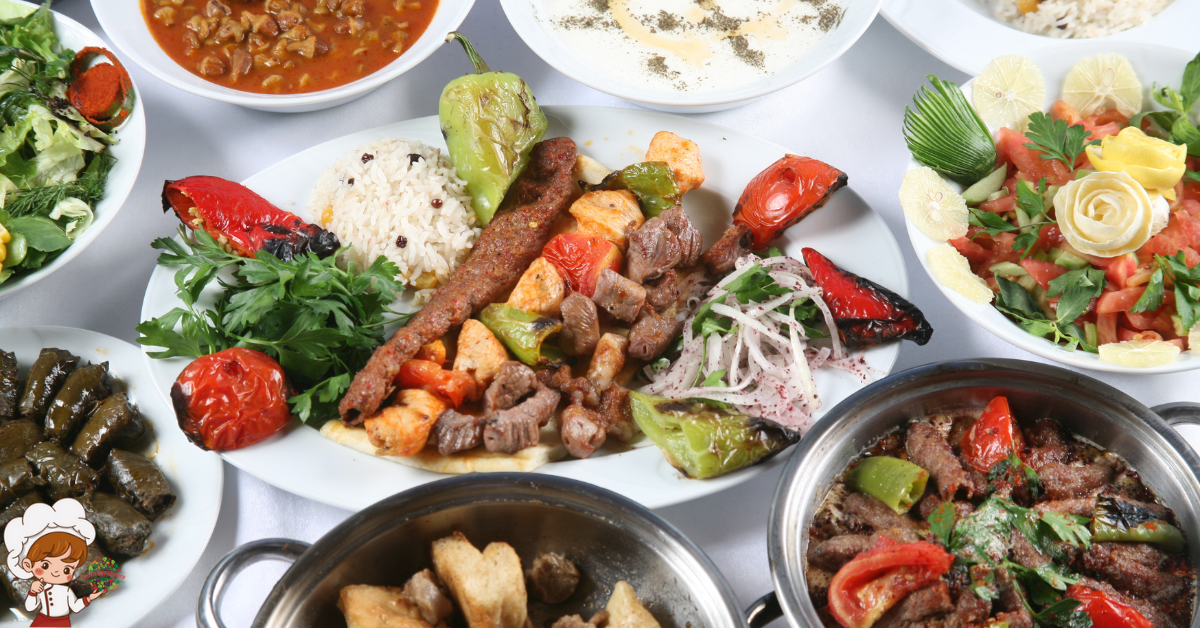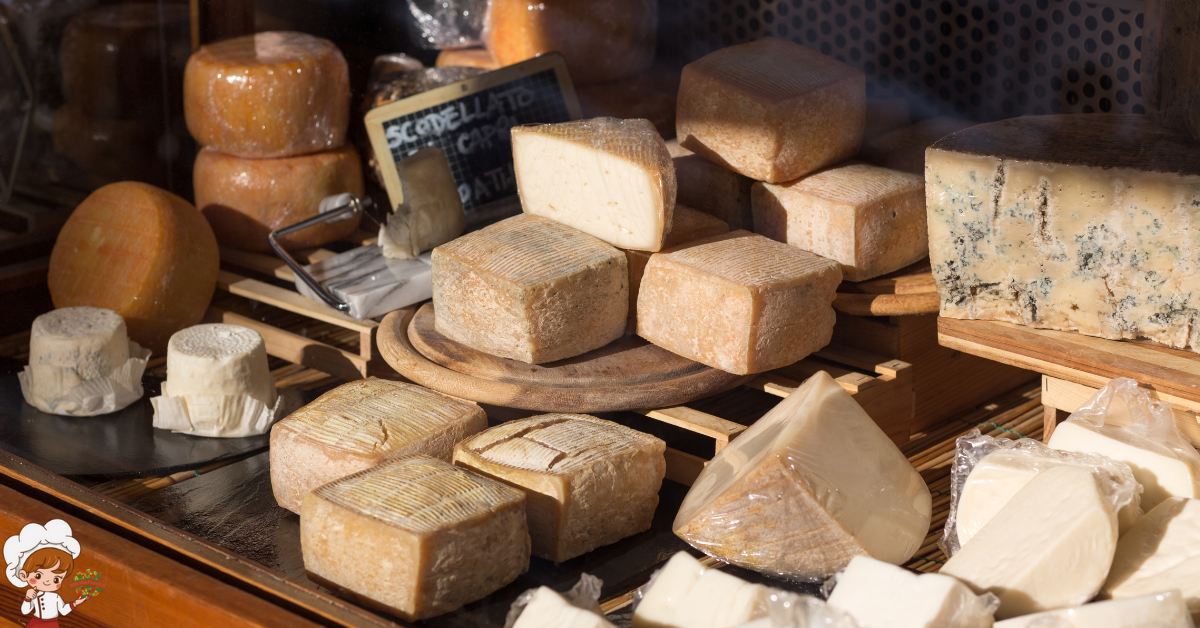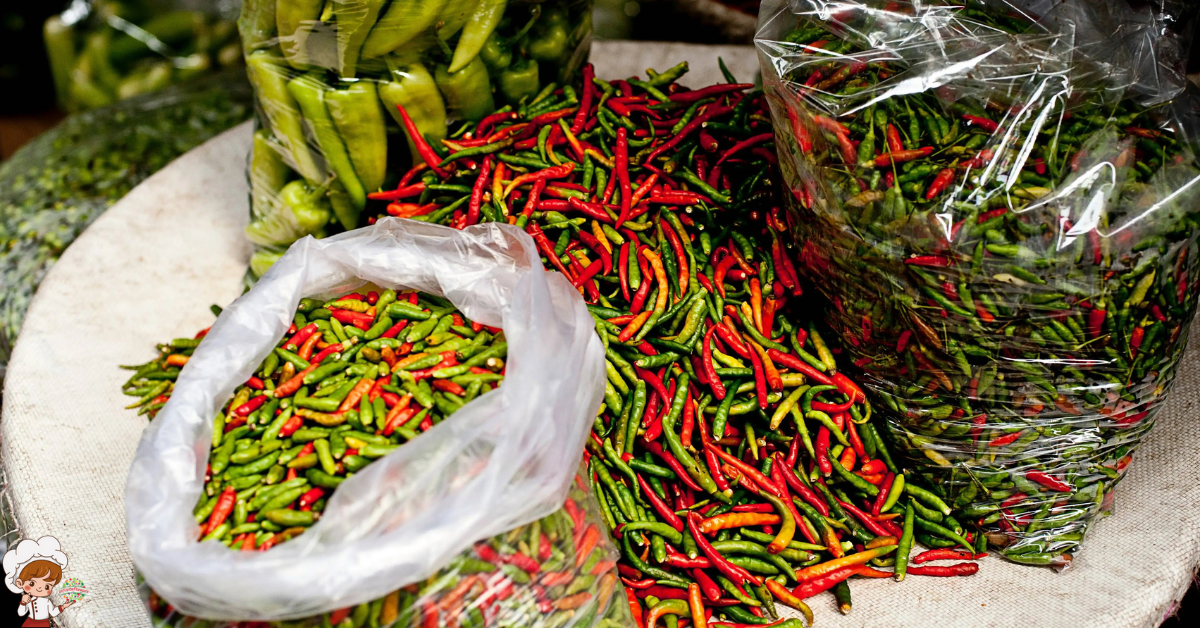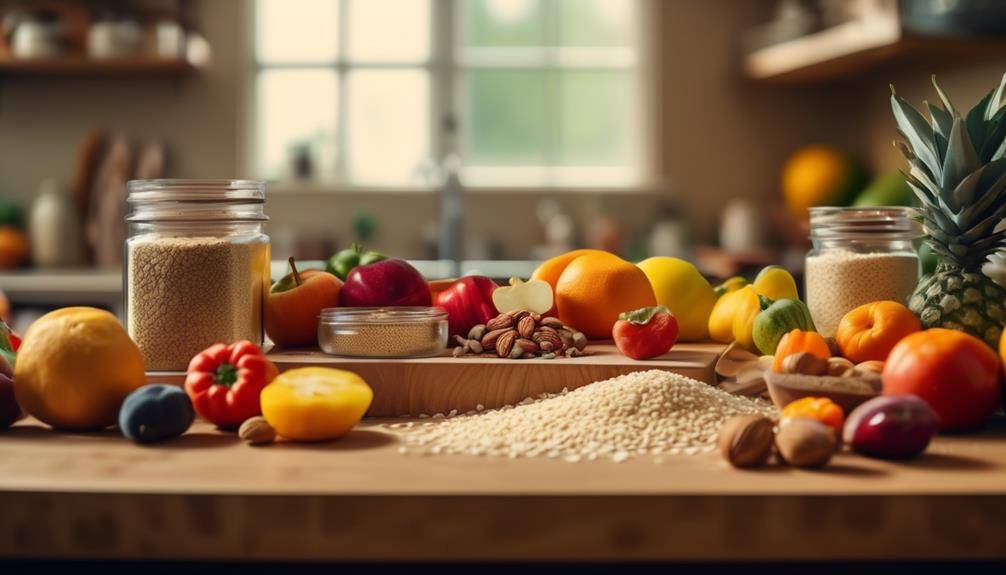Exciting Lebanese Cooking Techniques And Tips
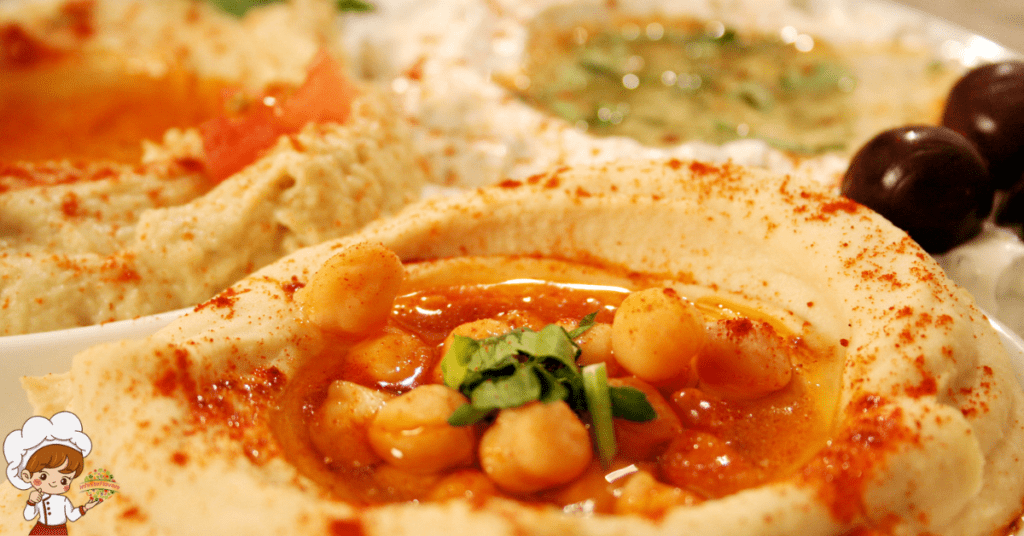
Exciting Lebanese Cooking Techniques And Tips; Imagine yourself stepping into a Lebanese kitchen, where the aroma of exotic spices and sizzling ingredients fills the air. As you watch the skilled hands of the cook effortlessly maneuvering pots and pans, you can’t help but wonder what secrets lie behind the delicious dishes that Lebanon is known for. In this discussion, we will uncover the techniques and tips that make Lebanese cooking a true art form, from marinating meats to perfecting fluffy rice, and much more. So, get ready to embark on a culinary journey that will leave your taste buds tantalized and your cooking skills elevated to a whole new level.
Essential Spices and Ingredients
If you’re looking to elevate your Lebanese cooking to the next level, it is essential to familiarize yourself with the diverse array of spices and ingredients that are integral to this rich culinary tradition. Lebanese cuisine is known for its bold and complex flavors, achieved through the use of flavorful seasoning blends and unique ingredients. Let’s dive into the world of Lebanese spices and ingredients and discover how they can transform your dishes.
One of the key elements of Lebanese cooking is the use of flavorful seasoning blends. These blends typically include a combination of spices such as cinnamon, nutmeg, allspice, and cloves. These spices add warmth and depth to dishes, creating a harmonious balance of flavors. Za’atar is another popular blend that consists of dried thyme, sumac, sesame seeds, and salt. It adds a tangy and herbaceous flavor to meat, vegetables, or even sprinkled on bread.
Another essential ingredient in Lebanese cuisine is pomegranate molasses. This thick, dark syrup is made by reducing pomegranate juice, resulting in a sweet and tangy flavor. Pomegranate molasses is used in both savory and sweet dishes and adds a unique depth of flavor. It is commonly used in marinades, dressings, and sauces, giving dishes a delightful tartness.
To incorporate these spices and ingredients into your Lebanese cooking, start by experimenting with different seasoning blends in your dishes. Sprinkle za’atar on roasted vegetables or use it as a rub for grilled meats. Try adding a drizzle of pomegranate molasses to your salad dressings or marinades for a burst of flavor. The possibilities are endless, and with a little experimentation, you’ll soon be mastering the art of Lebanese cooking.
Traditional Lebanese Cooking Methods
Traditional Lebanese cooking methods encompass a range of techniques that are integral to creating the distinct flavors and textures found in Lebanese cuisine. These techniques have been passed down through generations, allowing the secrets to authentic Lebanese flavors to be preserved and celebrated. Here are four traditional Lebanese cooking techniques that will elevate your culinary skills and transport your taste buds to the vibrant streets of Lebanon:
- Slow Cooking: Patience is key in Lebanese cuisine. Slow cooking allows the flavors to meld together, resulting in tender and flavorful dishes. Whether it’s a hearty stew or a succulent roast, the slow cooking method ensures that every ingredient is infused with rich flavors.
- Grilling: Grilling is a quintessential Lebanese cooking technique that imparts a smoky and charred flavor to meats, vegetables, and even bread. The use of charcoal or wood adds an earthy aroma that enhances the overall taste of the dish. From juicy kebabs to crispy falafels, grilling is a versatile technique that brings out the best in Lebanese ingredients.
- Pickling: Pickling is a traditional preservation method in Lebanese cuisine that adds a tangy and vibrant element to dishes. From pickled turnips to preserved lemons, the acidity cuts through the richness of the food, creating a harmonious balance of flavors. Incorporating pickled ingredients into your dishes will add a unique twist and a burst of freshness.
- Stewing: Stews are a staple in Lebanese cooking, and the slow simmering technique used in stews allows the flavors to meld together and intensify. The combination of spices, vegetables, and proteins creates hearty and comforting dishes that are perfect for cold winter nights or family gatherings.
The Art of Marinating Meats
Ready to elevate your meat dishes to the next level? Discover the art of marinating meats and unlock a world of flavor possibilities. Learn the secrets of flavorful spice combinations, like cumin, coriander, and paprika, that will infuse your meats with aromatic goodness. Master the use of acidic ingredients, such as lemon juice or yogurt, to tenderize your meat and create a melt-in-your-mouth texture. And don’t forget to give your meats the time they need to soak up all that deliciousness – proper marinating times can make all the difference between a good dish and an unforgettable one. Get ready to impress with your marinating skills!
Flavorful Spice Combinations
To elevate the flavors of your marinated meats, explore the world of Lebanese cuisine and discover the captivating art of combining spices. Lebanese cooking is known for its intricate spice pairing secrets that can enhance the flavors of your dishes in remarkable ways. Here are four flavorful spice combinations that will take your marinated meats to the next level:
- Za’atar and Sumac: The aromatic blend of za’atar, a mix of thyme, sesame seeds, and sumac, adds a tangy and earthy flavor to your meats. Sumac, with its citrusy notes, complements the richness of the meat perfectly.
- Seven Spices: This traditional Lebanese blend consists of allspice, black pepper, cinnamon, cloves, ginger, nutmeg, and fenugreek. It creates a warm and aromatic flavor profile that is perfect for marinating meats.
- Baharat: A popular Middle Eastern spice mix, baharat combines black pepper, cinnamon, cloves, cumin, coriander, cardamom, and paprika. It adds a complex and slightly spicy flavor to your marinated meats.
- Toum: This garlic sauce is made by blending garlic, lemon juice, and olive oil. It is a staple in Lebanese cuisine and can be used as a marinade or a dipping sauce, adding a bold and tangy flavor to your meats.
Experiment with these flavorful spice combinations and unlock the true potential of your marinated meats. Lebanese cuisine offers a world of exciting flavors waiting to be explored.
Acidic Ingredients for Tenderizing
To tenderize your marinated meats and achieve a melt-in-your-mouth texture, incorporate acidic ingredients into your marinade. Acidic marinades are known for their ability to break down tough muscle fibers, resulting in more tender and flavorful meat. There are various acidic ingredients you can use, such as lemon juice, vinegar, and yogurt. Lemon juice adds a bright and tangy flavor, while vinegar provides a sour and pungent taste.
Yogurt, on the other hand, not only tenderizes the meat but also adds a creamy and rich texture. When using acidic marinades, make sure to marinate the meat for at least 30 minutes, but no more than 24 hours, as prolonged exposure to acid can toughen the meat. Experiment with different combinations of acidic ingredients to find the perfect tenderizing technique for your meats.
Proper Marinating Times
For the best results when marinating meats, it is crucial to pay attention to the proper marinating times. Marinating is an essential step in Lebanese cooking that allows flavors to penetrate deep into the meat, resulting in tender and flavorful dishes. Here are some guidelines to help you determine the ideal marinating times:
- Marinating time for seafood: Seafood is delicate and can easily become over-marinated, resulting in a mushy texture. As a general rule, marinate seafood for no more than 30 minutes to 1 hour. This will allow the flavors to infuse without compromising the texture.
- Marinating time for vegetables: Vegetables, especially those with a high water content like cucumbers and tomatoes, require less time to marinate. Aim for a marinating time of 30 minutes to 1 hour for vegetables. This will help to enhance their natural flavors and add a subtle tanginess.
- Marinating time for poultry: Poultry, such as chicken and turkey, benefits from longer marinating times. Aim for a marinating time of at least 2 to 4 hours, or even overnight. This will ensure that the flavors fully penetrate the meat, resulting in juicy and flavorful dishes.
- Marinating time for red meat: Red meat, like beef and lamb, can handle longer marinating times due to its denser texture. Aim for a marinating time of at least 4 to 24 hours, or even up to 48 hours for tougher cuts of meat. This will help to tenderize the meat and develop rich flavors.
Perfecting the Fluffy Rice
Achieving the perfect, fluffy rice requires a few simple yet essential techniques that will elevate your Lebanese cooking to a whole new level. When it comes to rice, the ideal consistency is light, fluffy, and separate grains that are not clumpy or sticky. To achieve this, there are a few secrets to fluffy and flavorful rice that you should keep in mind.
Firstly, choosing the right type of rice is crucial. Lebanese cuisine often uses long-grain rice, such as Basmati or Jasmine, as they have a lower starch content and a tendency to cook up light and fluffy. Rinse the rice thoroughly before cooking to remove excess starch that can cause it to become sticky.
The next key step is toasting the rice before cooking. This helps to enhance the nutty flavor of the grains and prevents them from becoming sticky. Simply heat a small amount of oil or butter in a saucepan, then add the rinsed rice and stir it continuously over medium heat until it becomes slightly golden.
Another important technique is the rice-to-water ratio. For fluffy rice, the general rule of thumb is to use one part rice to two parts water. However, this may vary depending on the type of rice you are using, so be sure to check the package instructions for the specific ratio.
Once the rice is cooked, let it sit covered for a few minutes before fluffing it with a fork. This allows the steam to redistribute and ensures that the grains are evenly cooked and fluffy.
Mastering the Hummus Technique
Want to create the perfect hummus? Mastering the hummus technique is all about achieving a creamy texture, finding the perfect balance of tahini, and experimenting with flavorful topping combinations. The key to a velvety smooth hummus lies in properly cooking and blending the chickpeas until they are soft and tender. Once you’ve nailed the base, it’s time to play with different flavors and toppings to create your own signature hummus masterpiece.
Creamy Texture Secrets
To achieve a creamy texture in your hummus, embrace the art of blending until the chickpeas transform into a smooth and velvety puree that will tantalize your taste buds. Here are four techniques for achieving that perfect smooth consistency:
- Soak the chickpeas overnight: This step softens the chickpeas, making them easier to blend and resulting in a smoother texture.
- Cook the chickpeas until tender: Boil the chickpeas until they are soft and easily crushed between your fingers. This ensures that they blend effortlessly into a creamy puree.
- Use tahini paste: Adding tahini not only enhances the flavor of your hummus but also contributes to its creamy texture. Be sure to add it gradually while blending to achieve the desired consistency.
- Add ice-cold water: Adding ice-cold water while blending helps emulsify the hummus, creating a creamy and light texture.
Perfect Tahini Balance
To perfect the creamy texture of your hummus, let’s now focus on mastering the art of achieving the perfect tahini balance. Balancing flavors is crucial when it comes to creating the best hummus. Tahini, a paste made from ground sesame seeds, adds a distinct nutty flavor and contributes to the creamy consistency of the dip. However, achieving the right amount of tahini can be a challenge.
Too much, and the hummus becomes overpowering; too little, and it lacks depth. Experiment with different ratios to find your ideal tahini balance. If you’re looking for a tahini alternative, you can try using Greek yogurt or Greek-style yogurt for a lighter and tangier twist. Remember, mastering the perfect tahini balance is key to taking your hummus game to the next level.
Flavorful Topping Combinations
Enhance the flavors of your hummus by exploring a variety of delicious and creative topping combinations. Here are four flavor pairing suggestions and creative garnishing ideas that will take your hummus to the next level:
- Roasted Red Pepper and Feta: Top your hummus with smoky roasted red peppers and crumbled feta cheese. The sweetness of the peppers and the tanginess of the feta will add depth and a burst of flavor.
- Za’atar and Olive Oil: Sprinkle a generous amount of za’atar, a Middle Eastern spice blend, over your hummus and drizzle it with olive oil. The aromatic flavors of thyme, sesame seeds, and sumac will create a unique and tantalizing taste.
- Caramelized Onions and Pine Nuts: Sauté thinly sliced onions until golden brown and caramelized. Sprinkle these sweet and savory onions along with toasted pine nuts on top of your hummus for a delightful crunch and added richness.
- Fresh Herbs and Lemon Zest: Finely chop a medley of fresh herbs like parsley, mint, and cilantro. Sprinkle them on your hummus along with some grated lemon zest for a refreshing and zesty twist. The herbs will brighten up the flavors, while the lemon zest adds a tangy kick.
Get creative, experiment with these topping combinations, and let your taste buds soar with excitement!
Grilling the Perfect Kebabs
For grilling the perfect kebabs, marinating the meat is essential to infuse it with flavor and ensure tenderness. Lebanese cuisine is famous for its deliciously seasoned and grilled kebabs, and mastering the art of marinating is key to achieving that authentic, mouthwatering taste.
When it comes to grilling techniques, Lebanese cuisine emphasizes the use of charcoal grills. The smoky flavor that the charcoal imparts on the meat adds an extra layer of depth to the kebabs. Preheat your grill and make sure the coals are evenly distributed before placing the marinated kebabs on the grill. It’s important to keep an eye on the kebabs and turn them regularly to ensure even cooking and prevent burning.
Now, let’s talk about the marination process. In Lebanese cuisine, the meat is usually marinated in a combination of yogurt, lemon juice, olive oil, garlic, and a blend of spices such as cumin, paprika, and sumac. The yogurt helps to tenderize the meat while the citrusy flavors from the lemon juice add a refreshing tang. The spices bring a burst of aromatic flavors that truly elevate the kebabs.
To marinate the meat, simply combine all the ingredients in a bowl and mix well. Then, coat the meat evenly with the marinade and let it sit for at least a few hours or overnight in the refrigerator. This allows the flavors to penetrate the meat, resulting in incredibly flavorful and tender kebabs.
When it’s time to grill, thread the marinated meat onto skewers, alternating with vegetables if desired. This not only adds color and variety but also enhances the overall taste. Place the skewers on the hot grill and cook until the meat is charred on the outside and juicy on the inside.
With these grilling techniques and the art of meat marination, you’ll be able to create the perfect Lebanese kebabs that are bursting with flavor and melt-in-your-mouth deliciousness. So fire up your grill, gather your ingredients, and get ready to savor the taste of authentic Lebanese cuisine.
Secrets to Flavorful Stews and Soups
If you want to elevate your stews and soups to new levels of flavor, look no further than the secrets of Lebanese cuisine. Lebanese cooking techniques are known for creating rich and aromatic broths that will leave your taste buds begging for more. Here are four tips to help you achieve flavorful stews and soups that will impress even the most discerning palate:
- Choose flavorful broth options: The base of any great soup or stew is a delicious broth. Lebanese cuisine offers a variety of flavorful options, such as chicken, beef, or vegetable broth. You can enhance the taste by using homemade broths, which are made by simmering meat or vegetables with aromatic spices and herbs. The longer you simmer, the more depth of flavor you’ll achieve.
- Embrace slow cooking secrets: One of the secrets to Lebanese stews and soups is the slow cooking method. This allows the flavors to meld together and intensify over time. By simmering your ingredients on low heat for an extended period, you’ll create a rich and complex taste that is worth the wait. Patience is a virtue in Lebanese cooking, and the result is well worth the time investment.
- Layer your flavors: To achieve depth and complexity in your stews and soups, it’s essential to layer the flavors. Start by sautéing aromatic vegetables like onions, garlic, and celery in olive oil. Then, add your choice of protein and allow it to brown before adding the broth and other ingredients. This layering technique ensures that every bite is bursting with flavor.
- Add fresh herbs and spices: Lebanese cuisine is known for its vibrant use of herbs and spices. To enhance the taste of your stews and soups, add a generous amount of fresh herbs such as parsley, mint, and cilantro. Additionally, spices like cumin, cinnamon, and allspice can take your dish to the next level.
Creating Delicious Lebanese Salads
Get ready to tantalize your taste buds with the vibrant flavors of Lebanese cuisine by diving into the world of creating delicious Lebanese salads. Lebanese salads are known for their fresh and crisp ingredients, as well as their flavorful dressings that complement the natural flavors of the vegetables. One of the keys to a perfect Lebanese salad is the dressing, which adds a burst of flavor and brings the ingredients together harmoniously.
Lebanese salad dressings are typically made with a combination of olive oil, lemon juice, garlic, and herbs such as parsley and mint. This simple yet flavorful dressing enhances the taste of the vegetables and gives the salad a unique Lebanese touch. You can also experiment with different variations of dressings by adding ingredients like sumac, pomegranate molasses, or yogurt to create a more complex flavor profile.
In addition to the dressing, creative salad toppings play a crucial role in making a Lebanese salad stand out. Traditional ingredients like cucumbers, tomatoes, and lettuce are commonly used, but you can also add a twist to your salad by incorporating ingredients like radishes, bell peppers, or even grilled vegetables. Don’t be afraid to mix and match different textures and flavors to create a salad that is both visually appealing and delicious.
To add an extra layer of flavor, you can also include ingredients like feta cheese, olives, or toasted nuts. These toppings add a delicious contrast to the fresh vegetables and elevate the overall taste of the salad. Remember to be generous with your toppings and experiment with different combinations to find your favorite flavor combinations.
Tips for Making Authentic Lebanese Bread
Are you ready to learn the secrets of making authentic Lebanese bread? It all starts with the right choice of flour, which should be high-quality and finely ground for that perfect texture. Once you have the flour, it’s time to master the art of dough preparation, ensuring it is well-kneaded and properly rested for optimal flavor and elasticity. Lastly, when it comes to baking, pay attention to the temperature and time, as Lebanese bread requires a hot oven and a quick cooking process to achieve that signature golden crust.
Flour Selection
To achieve the perfect texture and flavor in your homemade Lebanese bread, selecting the right type of flour is essential. Here are some tips to help you choose the best flour for your bread-making endeavors:
- All-purpose flour: This versatile flour is commonly used in Lebanese bread recipes. It has a moderate protein content, which helps create a light and airy texture.
- Bread flour: If you prefer a chewier and more substantial bread, opt for bread flour. It has a higher protein content, resulting in a stronger gluten network that gives the bread its structure.
- Gluten-free alternatives: For those with gluten sensitivities, there are various gluten-free flours available, such as rice flour, almond flour, and chickpea flour. Experiment with different blends to find the one that works best for you.
- The role of yeast in baking: Remember that the type of flour you choose will also affect the performance of yeast. Stronger flours require more yeast for proper fermentation, while weaker flours may need additional support to rise adequately.
Dough Preparation
For an authentic Lebanese bread that is soft, fluffy, and full of flavor, mastering the art of dough preparation is crucial. To achieve the perfect texture and taste, understanding the techniques of kneading and working with flaky pastry is essential.
When preparing Lebanese bread dough, it is important to use the right amount of flour to create a balanced dough. Start by mixing the flour with water, salt, and yeast until a sticky dough forms. Then, transfer the dough onto a lightly floured surface and begin kneading. Kneading is the process of folding and pressing the dough to develop gluten, which gives the bread its elasticity and structure. Use the heel of your hand to push the dough away from you, then fold it back and repeat. This process should be done for about 10-15 minutes until the dough becomes smooth and elastic.
For flaky pastry, the dough needs to be rolled and folded multiple times to create layers. After kneading, roll out the dough into a rectangular shape. Fold the bottom third of the dough upwards, then fold the top third downwards to create three layers. Rotate the dough 90 degrees and repeat the rolling and folding process. These repeated layers will create a flaky texture when baked.
Mastering the art of dough preparation is a skill that will elevate your Lebanese bread to new heights. With proper kneading techniques and knowledge of working with flaky pastry, you can create bread that is authentically Lebanese. So, roll up your sleeves, get your hands in the dough, and let the magic of Lebanese breadmaking begin!
Baking Techniques
To create an authentic Lebanese bread that is crispy on the outside yet soft and fluffy on the inside, it is crucial to master the art of baking techniques. Here are four tips to help you achieve the perfect Lebanese bread:
- Baking Temperature: Preheat your oven to a high temperature, around 475°F (245°C). This high heat is essential for creating the characteristic crispy crust of Lebanese bread.
- Proper Kneading Techniques: Kneading the dough is a critical step in achieving the right texture. Use your hands to gently stretch and fold the dough, ensuring it is elastic and smooth. This process helps develop the gluten, resulting in a lighter and airy bread.
- Resting Time: After kneading, allow the dough to rest for at least an hour. This resting time allows the gluten to relax and the flavors to develop, resulting in a softer and more flavorful bread.
- Baking Time: When baking the bread, keep a close eye on it. Lebanese bread is thin and cooks quickly. It should take about 5-8 minutes to achieve the desired golden color and crispy texture.
Deep-Frying Lebanese Delights
Achieving the perfect crispy texture and golden color is essential when deep-frying Lebanese delights. Whether you’re making falafel, kibbeh, or sambousek, mastering the art of deep-frying is crucial for creating mouthwatering dishes that are crispy on the outside and tender on the inside. Before you dive into the world of deep-frying, it’s important to take some safety precautions to ensure a smooth and enjoyable cooking experience.
First and foremost, make sure to choose the right oil for deep-frying. Vegetable oils with high smoke points, like canola or peanut oil, are ideal for deep-frying as they can withstand high temperatures without breaking down. It’s also important to use a deep-fry thermometer to monitor the oil temperature and prevent it from overheating. This will help you achieve that perfect golden color without burning the food.
When deep-frying, always use a deep, heavy-bottomed pot to prevent oil splatters and accidents. Make sure the pot is only filled halfway with oil to avoid overflow when adding the food. Additionally, use a slotted spoon or a wire mesh skimmer to carefully lower the food into the hot oil to prevent any potential burns.
Now that we’ve covered some safety precautions, let’s dive into the popular deep-fried Lebanese street food. One of the most beloved dishes is falafel, made from ground chickpeas or fava beans mixed with herbs and spices. These crispy, golden-brown balls are often served in pita bread with tahini sauce, pickles, and fresh vegetables.
Another delicious deep-fried Lebanese delight is sambousek, a savory pastry filled with a variety of fillings such as ground meat, cheese, or spinach. These triangular pastries are great as a snack or appetizer.
Sautéing and Stir-Frying Lebanese Style
When sautéing and stir-frying Lebanese style, you’ll discover a world of vibrant flavors and aromatic spices that bring your dishes to life. Lebanese cuisine is known for its use of fresh ingredients and bold flavors, and sautéing and stir-frying are two techniques that allow these flavors to shine. Here are some tips to help you master the art of sautéing and stir-frying Lebanese style:
- Lebanese stir fry variations: Lebanese cuisine offers a variety of stir fry options that are sure to tantalize your taste buds. From classic dishes like chicken shawarma stir fry to vegetarian options like eggplant and chickpea stir fry, there’s something for everyone. Experiment with different combinations of meat, vegetables, and spices to create your own unique Lebanese stir fry.
- Tips for sautéing vegetables in Lebanese cuisine: When sautéing vegetables, it’s important to use high heat and a good quality olive oil. This helps to retain the vibrant colors and flavors of the vegetables. Start by heating the oil in a pan, then add the vegetables and sauté them until they are tender-crisp. Don’t overcrowd the pan, as this can cause the vegetables to steam instead of sauté. Add spices like cumin, sumac, or za’atar to enhance the flavors of the vegetables.
- Incorporate aromatic spices: Lebanese cuisine is famous for its use of aromatic spices such as cumin, coriander, and sumac. These spices add depth and complexity to sautéed and stir-fried dishes. Don’t be afraid to experiment with different spice combinations to create unique and flavorful dishes.
- Don’t forget the garlic: Garlic is a staple in Lebanese cuisine and adds a delicious flavor to sautéed and stir-fried dishes. Be sure to mince or finely chop the garlic before adding it to the pan. This allows the flavors to infuse the dish evenly.
Tips for Perfectly Cooking Lentils and Beans
For perfectly cooked lentils and beans that are tender and full of flavor, follow these expert tips and techniques. Cooking lentils and beans can seem simple enough, but achieving that perfect texture and taste requires some attention to detail. Here are some valuable tips to help you master the art of cooking lentils and beans.
Firstly, before cooking lentils and beans, it is essential to sort through them and remove any debris or pebbles. Rinse them thoroughly under cold water to remove any dirt or dust. This step ensures that your lentils and beans are clean and ready for cooking.
Next, soaking lentils and beans before cooking can greatly improve their texture and reduce cooking time. Soaking overnight in cold water is ideal, but if you’re short on time, a quick soak in hot water for an hour will suffice. Soaking helps to soften the lentils and beans, making them easier to cook and reducing the chances of them splitting or becoming mushy.
When it comes to cooking lentils and beans, it’s important to use the right amount of liquid. Lentils generally require a 1:2 ratio of lentils to water, while beans often need a 1:3 ratio. However, this can vary depending on the type of lentil or bean you are cooking, so be sure to check the package instructions for specific recommendations.
To enhance the flavor of lentils and beans, consider adding aromatics such as onions, garlic, and spices like cumin or bay leaves. These ingredients infuse the lentils and beans with delicious flavors as they cook.
Lastly, be patient when cooking lentils and beans. Simmering them over low heat allows them to cook evenly and absorb the flavors of the liquid. Avoid boiling them vigorously, as this can cause them to break apart or become mushy.
Lebanese Desserts: Techniques and Tips
To master the art of creating delicious Lebanese desserts, you’ll want to learn the techniques and tips that will take your sweet treats to the next level. Lebanese desserts are known for their exquisite presentation and unique flavors. Here are some techniques and tips to help you create stunning desserts while also making them healthier.
- Lebanese Dessert Presentation: Presentation plays a vital role in Lebanese desserts. Pay attention to the visual appeal of your desserts by using vibrant colors and decorative elements. Garnish your desserts with fresh fruits, edible flowers, or chopped nuts to add texture and a pop of color. Additionally, consider serving your desserts in traditional Lebanese dessert bowls or plates to enhance the overall experience.
- Tips for Making Lebanese Desserts Healthier: While Lebanese desserts are often indulgent, there are ways to make them healthier without compromising on taste. Substitute refined sugar with natural sweeteners like honey or maple syrup. Use whole wheat flour instead of all-purpose flour to increase the fiber content. Replace butter with healthier alternatives like olive oil or Greek yogurt. Additionally, incorporate more fruits, such as dates or figs, into your desserts for added natural sweetness and nutritional value.
- Balancing Flavors: Lebanese desserts often feature a perfect balance of sweet, tangy, and aromatic flavors. Experiment with different combinations of spices like cinnamon, cardamom, and nutmeg to add depth and complexity to your desserts. Don’t be afraid to incorporate a hint of lemon or orange zest to brighten up the flavors.
- Traditional Lebanese Dessert Techniques: Learn traditional Lebanese dessert techniques like kneading dough, folding phyllo pastry, and making syrup. These techniques will help you achieve the authentic taste and texture of Lebanese desserts.
Frequently Asked Questions: Exciting Lebanese Cooking Techniques And Tips
How Can I Make My Hummus Extra Creamy and Smooth?
To achieve a velvety texture for your hummus, try these tips: use canned chickpeas, peel off the skins, and blend for longer. As for creative flavor combinations, try roasted red pepper or caramelized onion hummus. Delicious!
What Are Some Tips for Achieving a Perfectly Grilled Kebab?
To achieve a perfectly grilled kebab, you need to master some grilling techniques and marinating secrets. It’s all about getting that smoky char on the outside while keeping the meat juicy and tender on the inside.
How Can I Make My Lebanese Salads More Flavorful?
To make your Lebanese salads more flavorful, try incorporating fresh herbs like mint and parsley, along with tangy ingredients like lemon juice and sumac. Don’t forget to season with salt and pepper for that extra kick!
What Are Some Common Mistakes to Avoid When Deep-Frying Lebanese Delights?
When deep-frying Lebanese delights, common mistakes to avoid include using the wrong oil, overcrowding the pan, and not maintaining the right temperature. Achieve crispy, non-greasy dishes by following these tips.
How Can I Ensure That My Lentils and Beans Are Perfectly Cooked Every Time?
To ensure perfectly cooked lentils and beans every time, soak them overnight to reduce cooking time. For lentils, simmer them in water until tender. For beans, cook them in a pressure cooker or slow cooker for optimal results.
Conclusion
In conclusion, Lebanese cooking techniques and tips offer a world of flavor and culinary delight. By utilizing essential spices and ingredients, mastering traditional cooking methods, and perfecting techniques such as marinating meats and making fluffy rice, you can create authentic Lebanese dishes bursting with taste. Whether you’re deep-frying Lebanese delights, sautéing and stir-frying Lebanese style, or cooking lentils and beans to perfection, these tips will help you elevate your skills in the kitchen. And don’t forget to explore the world of Lebanese desserts, where techniques and tips abound to satisfy your sweet tooth.




